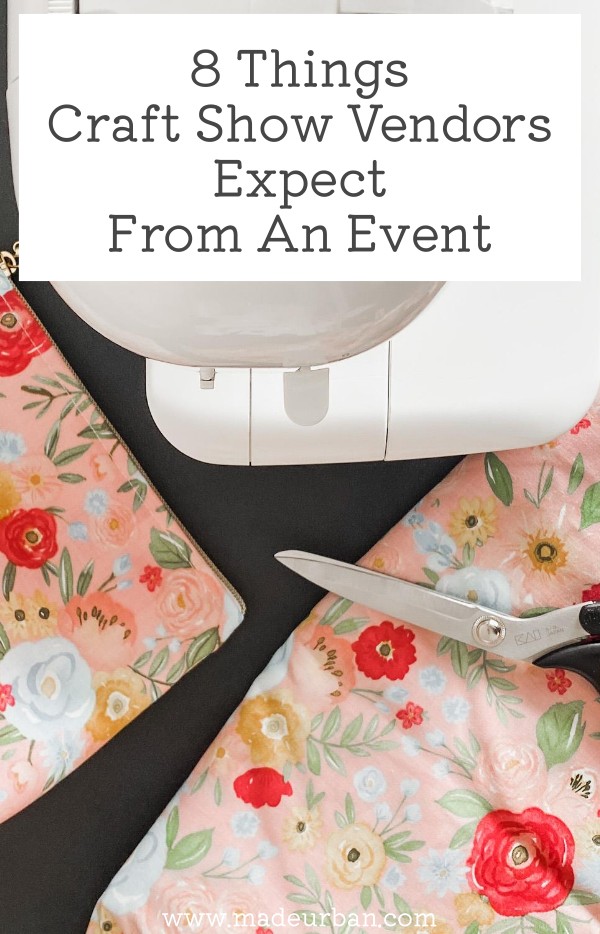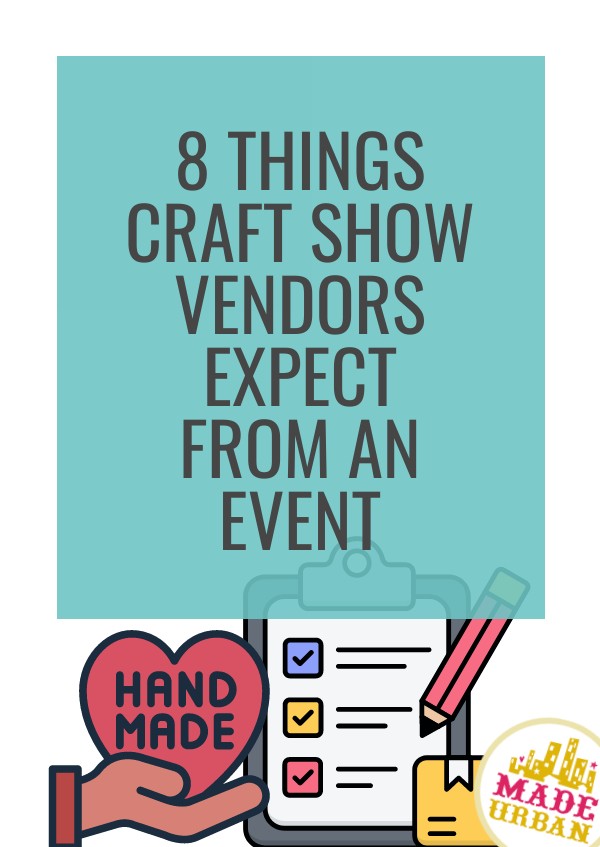8 Things Craft Show Vendors Expect from an Event
If you’re organizing a craft show, you already know it comes with a lot of responsibility.
You need to make sure it’s a good event for shoppers, so they discover new businesses and find items to buy.
And you need to ensure it’s successful for vendors too.
This article shares 8 things craft show vendors expect from a craft show, and that will have them viewing the event as a success.

1 – Lots of marketing
If a craft show isn’t well-marketed, it won’t attract enough shoppers for vendors to make enough sales to cover their costs.
Vendors want to be confident that their time and money are being spent wisely by participating in shows that are going to attract a good crowd.
They’ll look for your marketing efforts to be consistent leading up to the event, and that they aren’t relying on one source.
- Make use of different social media platforms and mix it up with posts. If vendors notice that you only post to Facebook, and every post is an image of the event’s flyer, and no one is sharing, commenting, or liking those posts, they’ll feel like you’re phoning it in.
- Send out press releases to local papers and magazines.
- Try to get on a local radio station
- Put up posters
- Etc.
Vendors would rather spend more on booth fees for an event that’s well-marketed and gets shoppers through the door than spend less on booth fees and make very few sales.
It’s a lot of effort for them to prepare for an event and spend their weekend standing behind their table. Make sure it’s worth their while.
2 – Communicate
Building on point one, it’s a good idea to let your vendors know where, when, and how you’re advertising an event. They’ll appreciate knowing the effort you’re putting in, and if you’re promoting specific products, they’ll want to know what to stock up on.
They also need to know important information that will help the day go smoothly for them.
- What time can they arrive for setup?
- Where can they unload?
- Where is the best parking?
- Where will their booth be?
- Will there be food, drink, an ATM, etc. on site?
- Which other vendors will be participating?
3 – Allow ample time to set up
Craft show displays have gotten more extravagant and can take a while to set up. It’s also a lot of work to haul bins of stock, fixtures, signage, etc., to their space, and vendors appreciate having some time to collect themselves, use the washroom, meet their booth neighbor, etc., before the doors open.
It will be a long day for you as well, but giving vendors the option to come early and give themselves lots of time to set up will be appreciated.
For bigger events, with bigger booths, it’s often expected that the venue will be available to vendors to set up the day before the event starts.
4 – Allow for breathing room
I’ve sold at many events where the tables were provided and set up for us, but there was only an inch or two between each table.
That makes it really hard to set up when you have to walk to the end of an aisle and then walk behind every vendor to get to the back of your space.
It’s also not ideal when a vendor wants/needs to move to the front of their table to interact with a shopper or help them find something.
There should be enough room between tables for vendors to walk between them.
This also allows space for a shopper to stand off to the side and not block tables when they’re stopping to chat with someone or are waiting to pay.
5 – Curate
It’s great to sell out all of your vendor spaces, but do be sure you’re thinking about how each vendor will work to provide a unique shopping experience and to allow everyone to stand out and make sales.
Having too many vendors from one category (e.g. too many jewelry vendors) or vendors with similar styles can create a situation that makes it hard for those vendors to make sales.
If you’re accepting several vendors under one category, ensure they each bring something unique to the table and have products that won’t (directly) compete with each other.
It’s also important to curate a good layout. A vendor selling jewelry doesn’t want to be right next to another vendor selling jewelry.
6 – Make it easy for vendors to market the event
Craft show vendors like to let their fans, customers, and followers know where they can find them. Creating well-designed promotional material that they can use to promote the event will encourage them to do so.
Offer marketing materials they can hand out at other craft shows and digital images they can use to promote the event online.
7 – Focus on a niche
Craft show vendors don’t like it when they sign up for a craft show and when they arrive, they find out that spots were filled with MLM businesses (e.g. Tupperware, Norex, etc.)
It makes it harder for a handmade business to sell its products when they’re next to someone selling items that are priced based on mass production.
It also changes the vibe of an event.
If you’re going to have a mix of handmade and non-handmade, be sure that’s communicated to vendors before they sign up.
It may also be helpful to dedicate a section of the event space to MLM businesses, so it’s clear to shoppers what’s handmade and what’s not.
8 – Attract buyers
It’s one thing to get lots of people through the door, but if those people don’t buy, vendors won’t view the event as a success.
Sometimes craft show organizers choose a venue that’s in a popular area so they can rely on foot traffic to get people through the doors.
The problem with that can be that often, people who stumble upon a craft show aren’t as ready to buy. They may just pop in to look around and pass the time.
Another scenario to be mindful of is trying to have something for everyone (e.g. activities for kids, music and entertainment, food trucks, and vendors selling handmade goods).
When there’s so much going on, it can make an event feel busy, but make it hard for the handmade vendors to sell their products.
When you have a specific theme, target a specific market of people, and curate vendors that appeal to that target market, you’re more likely to attract lots of buyers.


Hey, I’m Erin 🙂 I write about small business and craft show techniques I’ve learned from being a small business owner for almost 2 decades, selling at dozens of craft shows, and earning a diploma in Visual Communication Design. I hope you find my advice helpful!
